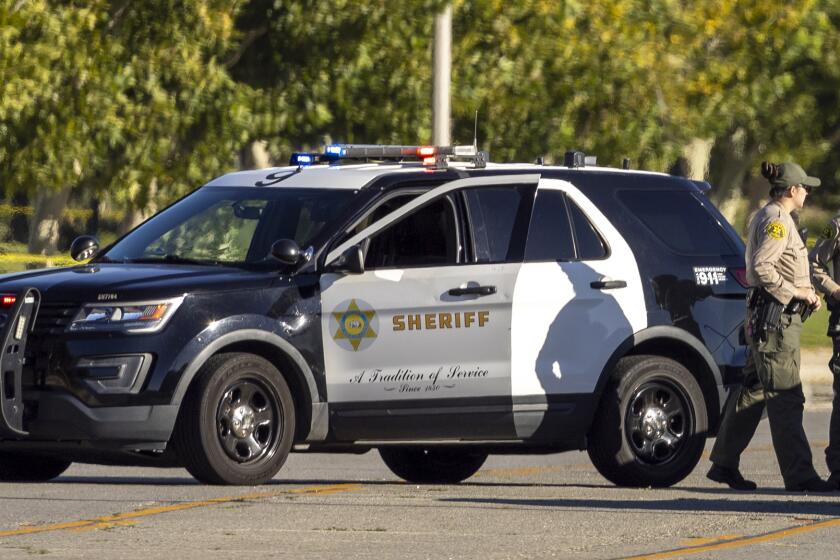Sewage Spilled Into Bay; Beach Warnings Posted
- Share via
New troubles at the decaying Hyperion treatment plant led officials to divert 6.2 million gallons of treated Los Angeles city sewage into the ocean a mile from shore Friday morning and post warnings for weekend visitors to Playa del Rey beaches.
Friday’s episode, the latest in a series of unplanned spills since January at the 30-year-old plant, was blamed on electrical failures and a lightning strike that disabled pumps at the plant. Two plant supervisors were suspended in June after a major spill went unreported, but this latest episode was reported as required by law, city Bureau of Sanitation officials said.
In contrast to the June spill, all effluent discharged Friday was chlorinated and no unusual bacteria contamination is expected along the beaches, said Harry Sizemore, assistant director of the bureau. However, the results of bacteria tests will not be known until today.
Signs Posted on Beach
The signs were posted at Dockweiler State Beach as a precaution and to satisfy Westside political leaders who have pressured officials to let the public know when there is a chance of contaminated sewage reaching the beach.
In normal operation, raw sewage from throughout Los Angeles flows into the plant, which is on the coastal dunes near Los Angeles International Airport. It is pumped into large settling tanks where solid material settles out, leaving about 400 million gallons a day of “primary treated” waste water.
About 100 million gallons of this receives “secondary treatment,” which uses microorganisms to consume small particles of organic material suspended in the waste water. The waste water from both processes is then pumped into a submarine canyon five miles offshore.
However, when the massive pumps that feed the five-mile line break down--as they did late Thursday night and again Friday morning--the waste water is diverted into a relief pipe that runs only a mile out to sea and leaves the effluent in shallower water. During these diversions, which carry a mixture of primary- and secondary-treated effluent, chlorine is added to kill bacteria.
In the latest episode, a lightning strike that knocked out a Department of Water and Power transformer led to a diversion of 5.7 million gallons for 90 minutes, beginning at 11 p.m. Thursday. About 3:30 a.m., a malfunction inside the plant knocked out the pumps and led to a spill of between 500,000 and a million gallons.
Electric Failures
Electric failures, some caused by relatively minor power surges, have knocked out the critical pumps several times this year. In May and June, three outages alone led to the discharge of 17 million gallons out the relief pipe, or “one-mile putfall,” most of it without the extra chlorine treatment.
Don Smith, a private consultant hired to manage Hyperion, said the electrical troubles are due to outdated equipment used to control the pumps. The equipment is being renovated as part of an extensive modernization under way at the plant.
The entire operation at Hyperion has come under increasing criticism from elected officials and environmental authorities concerned about evidence that the years of sewage dumping has degraded the condition of fish and other marine life in Santa Monica Bay.
The problem has caused concern about eating fish caught in the bay.
Last year, in a consent decree filed in federal court, the city agreed to demands by the Environmental Protection Agency and state officials to subject all effluent to secondary treatment by the end of 1998. The city also agreed to stop pumping sludge, a concentrated form of the solids removed from waste water, into the bay by the end of this year.
The city paid a $625,000 fine, the largest ever imposed on a city for violating the federal Clean Water Act, as part of the consent decree and also agreed to spend more than $2 billion to modernize its sewer and treatment system.
More to Read
Sign up for Essential California
The most important California stories and recommendations in your inbox every morning.
You may occasionally receive promotional content from the Los Angeles Times.













